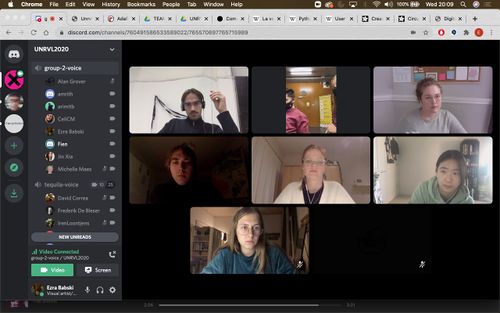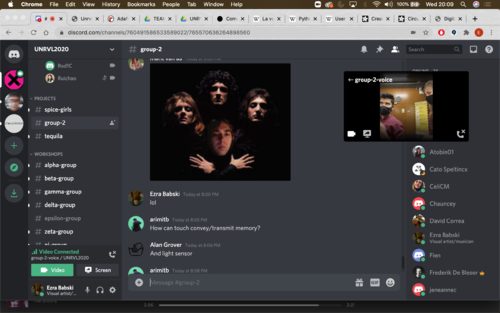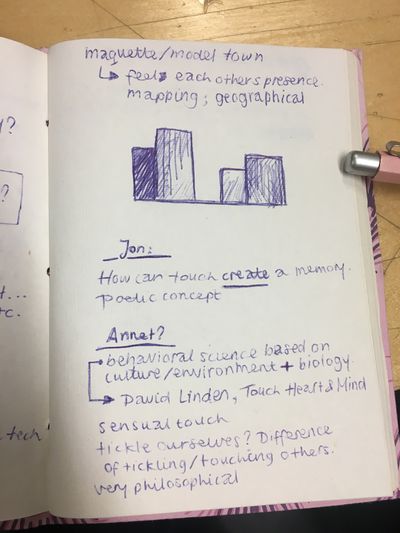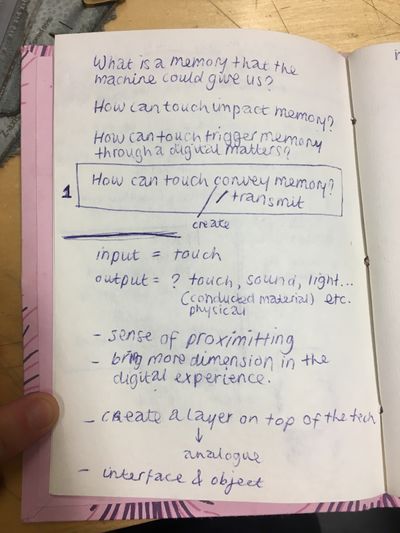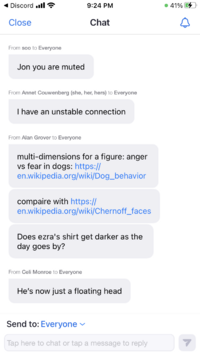Difference between revisions of "UNRVL9-Project2"
EzraBabski (talk | contribs) |
EzraBabski (talk | contribs) |
||
| Line 51: | Line 51: | ||
==Project Description== | ==Project Description== | ||
| − | {| role="presentation" class="wikitable mw-collapsible mw-collapsed" style="width: | + | {| role="presentation" class="wikitable mw-collapsible mw-collapsed" style="width: 90%"; |
! style="background: light grey;"|<strong><font color="black" size="6"><center> Project Description </strong></center></font> | ! style="background: light grey;"|<strong><font color="black" size="6"><center> Project Description </strong></center></font> | ||
|- | |- | ||
Revision as of 09:32, 16 October 2020
Group 2
Fluidity of Presence: Ways of Being Together in the Digital Age
Can we communicate the complex experience of presence and absence, nearness and distance that is a feature of embodied existence (in short, the spectrum of "being together") by designing hybrid analogue/digital technologies that eschew stale binaries of online/offline connection?
Contents
Project Description
|
Digital presence takes many forms. Regardless of whether we are “plugged in,” our digital footprint manifests in the digital ecosystem as a constantly expanding network of traces, data artefacts, biometric residues and transaction histories. Viewed from this angle, the conventional, binary distinction between online/offline states ceases to make sense; indeed, given the extent of our current dependence on digital technology, almost all of us are always digitally present, if only in a hyperfragmented way. It is more accurate, therefore, to insist on the existence of a spectrum of "online" states.
|
Research
Monday Oct 12
With the whole group finally present, we began with a round of skills-sharing. Members shared the following:
Tuesday Oct 13Wednesday Oct 14Thursday Oct 15Friday Oct 16 |
Documentation
Result
|
[...] |

